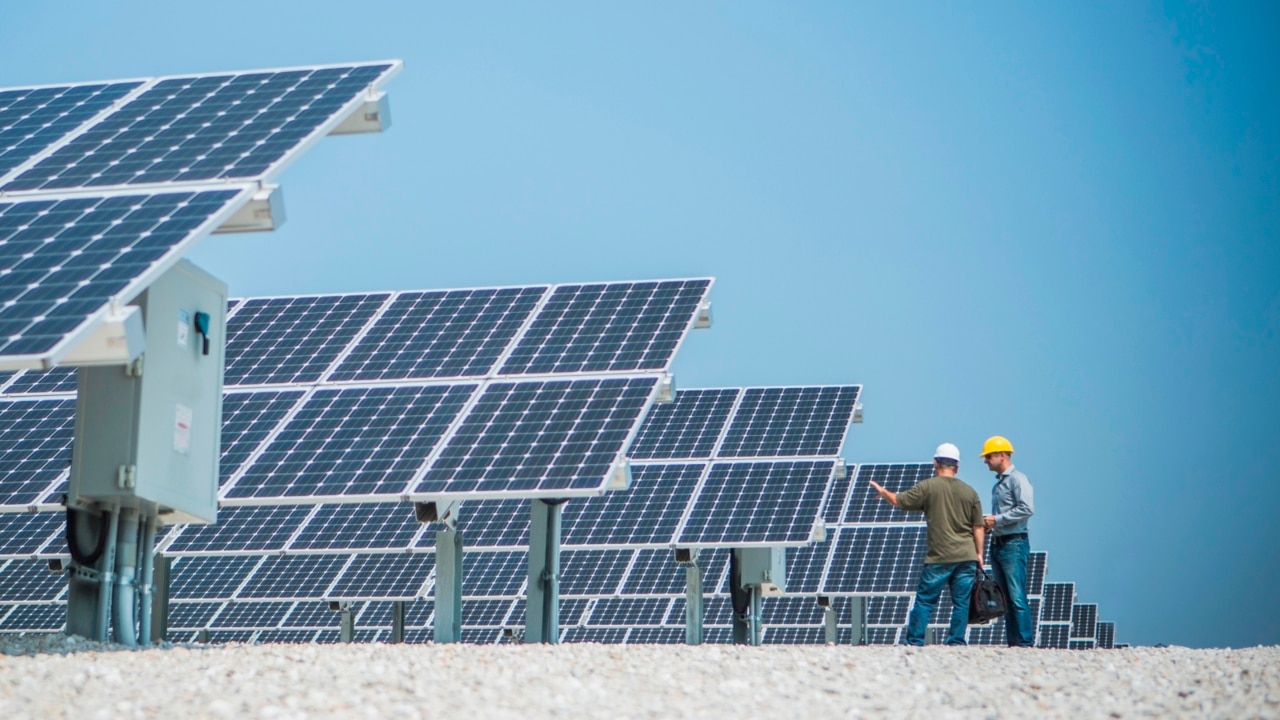Supply chain crunch could slow green transition
Supply chain and workforce issues will be the biggest challenge to Queensland reaching its ambitious renewable energy targets, the head of the state-owned transmission line operator says.

Supply chain and workforce issues are the key hurdles confronting Queensland’s transition from coal to renewable energy, the head of the state-owned transmission line operator says.
Paul Simshauser, chief operating officer of Powerlink, said about 2000 km of new transmission lines, costing about $8bn, would need to be built in Queensland in the next 15 years.
The Palaszczuk government has committed to bringing 22 gigawatts of new renewable energy into the grid by 2035 to replace the state’s coal-fired power fleet.
There is growing concern among industry that the biggest bottleneck in the transition to green energy will be building high-voltage transmission lines fast enough to compensate for the accelerated retirement of coal power stations.
Professor Simshauser said Queensland’s existing transmission grid had a lot of places to connect renewables but eventually would need “really major augmentations’.
“If there are delays, via workforce constraints or supply chain issues, it could have a pretty adverse impact on market prices,” he told The Australian after addressing a CEDA lunch in Brisbane on Wednesday.
“It’s a really big focus for all the transmission businesses up and down the eastern seaboard”
Giving examples of the supply chain crunch, Professor Simshauser said lead order time for a circuit breaker had increased from 44 weeks to 120 weeks. He said the state would need to start ordering phase shifting transformers – used to force power in a particular direction – by next year if they were to arrive by 2030.
Professor Simhauser, former director-general of the state’s energy department, said supply chain and workforce issues were “natural” given “everyone's doing this all over the world and all at once”.
“The one bit of confidence I have up here in Queensland is just the sheer size of renewable projects that are being taken on,” he said.
“Our average ticket size for wind projects here, for example, range between 500 and 1000 megawatts - that gets you to your targets a lot faster than when you’re trying to do it at a much smaller scale.
“We have a long way to go to hit our 80 per cent target, but I think the bases are loaded and our network is set up to push those renewable projects over the lines. “
As of May, 24.9 per cent of Queensland’s energy consumption was sourced from renewables.
Under the state’s energy targets announced last year, that will rise to 50 per cent by 2030 and, 70 per cent by 2032, and 80 per cent by 2035.
At the weekend, Premier Annastacia Palaszczuk announced Queensland would legislate its ambitious targets before the end of the year as the state moves to all-but phase out coal-fired power by 2035.
Queensland’s renewable targets rely on two new pumped hydro mega-projects in regional Queensland, both controversial with local communities.
The Pioneer-Burdekin Pumped Hydro project, near Mackay, will require the resumption of about 50 homes and has not yet been subjected to detailed engineering and environmental investigations, or received any government approvals.
Locals have also protested against proposed routes of transmission lines which will link the Borumba pumped hydro project, near Gympie, to the grid.








To join the conversation, please log in. Don't have an account? Register
Join the conversation, you are commenting as Logout